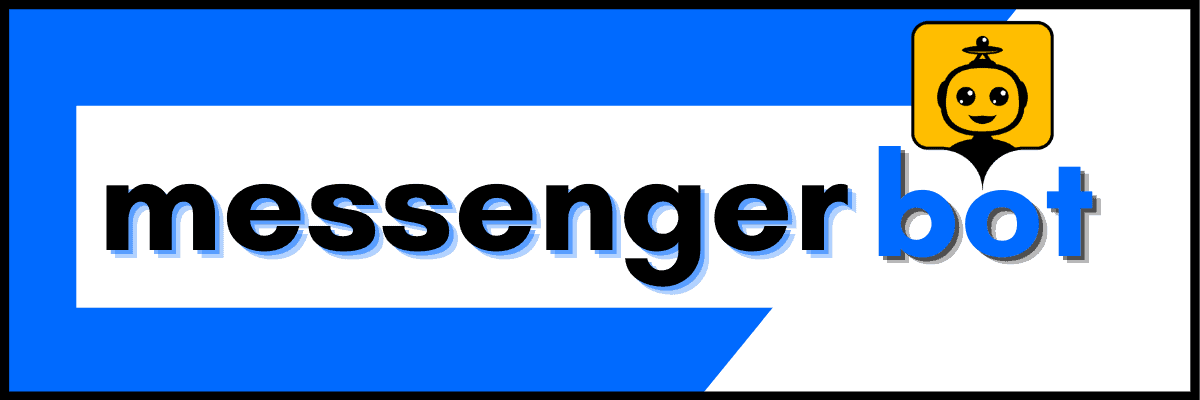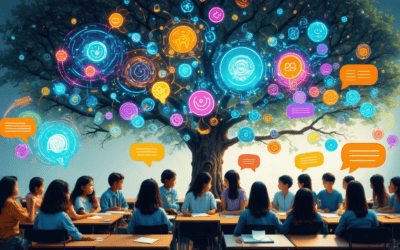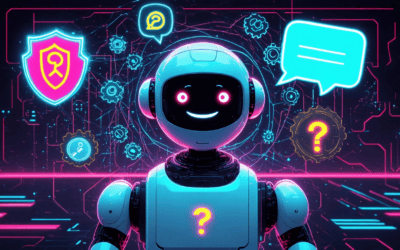In today’s digital landscape, the ability to build your own AI chatbot has become an invaluable asset for businesses and individuals alike. This comprehensive guide will walk you through the essential steps of creating your own AI chatbot, from understanding the underlying technology to selecting the right tools and platforms. As we delve into the intricacies of how to make your own AI chatbot, you’ll discover the benefits of customization, the key features that enhance user experience, and the common challenges you may face during development. Whether you’re looking to create your own AI bot for customer service, engagement, or automation, this article will equip you with the knowledge and insights needed to successfully navigate the process. Join us as we explore the fascinating world of building your own AI bot and unlock the potential of AI-driven interactions.
What is an AI chatbot and how does it work?
An AI chatbot is a sophisticated software application designed to simulate human conversation through artificial intelligence (AI). These chatbots can engage users in natural language, providing responses that are contextually relevant and informative. By utilizing advanced algorithms and machine learning techniques, AI chatbots can understand user queries and deliver accurate answers, making them invaluable tools for businesses looking to enhance customer interaction.
Understanding AI Chatbots: Definition and Functionality
To create your own AI chatbot, it’s essential to grasp what they are and how they function. AI chatbots operate by processing user input, interpreting the intent behind the message, and generating appropriate responses. This process involves several key components:
- Natural Language Processing (NLP): This technology enables chatbots to understand and interpret human language, allowing for more natural interactions.
- Machine Learning: AI chatbots improve over time by learning from past interactions, which helps them provide more accurate responses in future conversations.
- Integration Capabilities: Many AI chatbots can be integrated into various platforms, such as websites and social media, enhancing their accessibility and usability.
By leveraging these technologies, businesses can build their own AI chatbot that meets specific needs, streamlining customer service and engagement.
The Technology Behind AI Chatbots: Machine Learning and NLP
The backbone of any effective AI chatbot lies in its underlying technology, primarily machine learning and natural language processing (NLP). These technologies work together to create a seamless user experience:
- Machine Learning: This subset of AI allows chatbots to learn from data and improve their performance over time. By analyzing user interactions, chatbots can identify patterns and refine their responses, making them more effective at addressing user needs.
- Natural Language Processing (NLP): NLP enables chatbots to comprehend and generate human language. This technology breaks down user input into understandable components, allowing the chatbot to respond in a way that feels conversational and engaging.
Understanding these technologies is crucial for anyone looking to make their own AI chatbot. By harnessing the power of machine learning and NLP, businesses can create chatbots that not only respond accurately but also enhance user satisfaction and engagement.
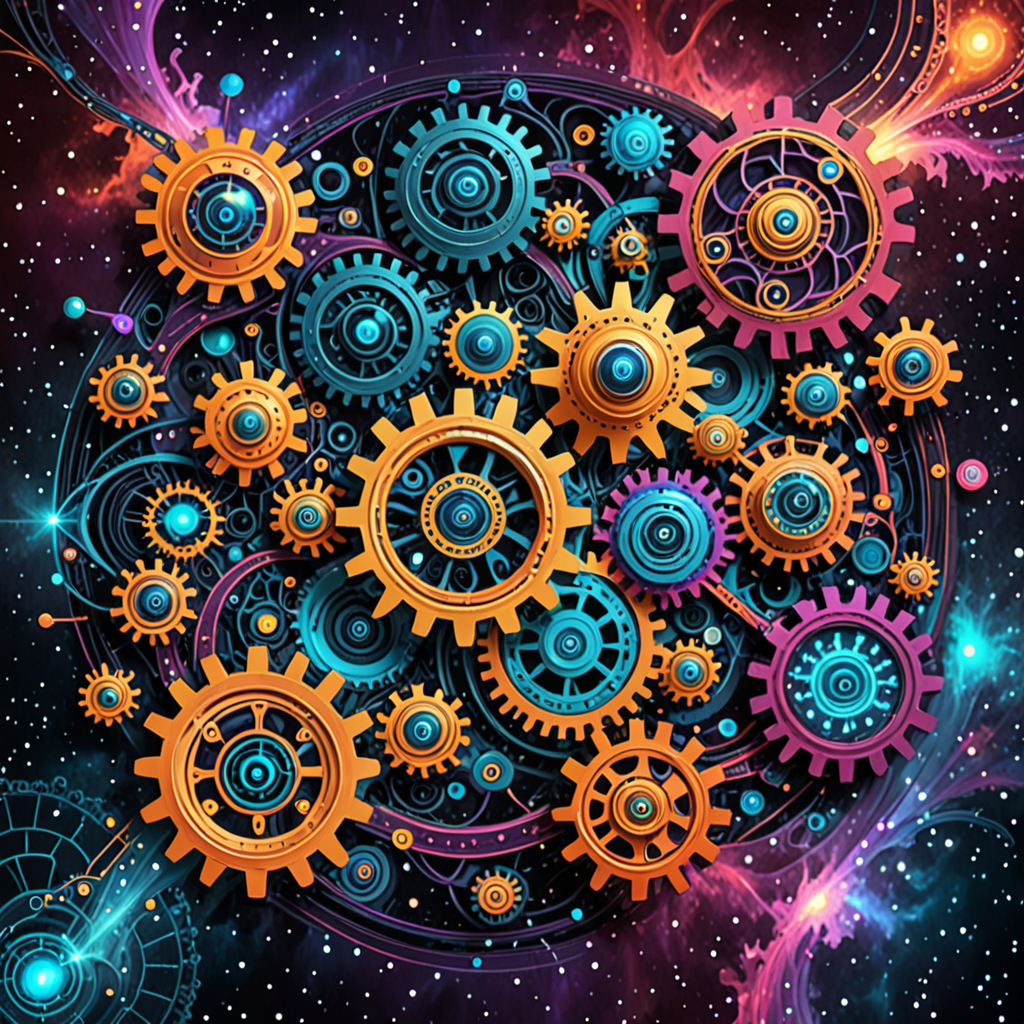
Why should you build your own AI chatbot?
Building your own AI chatbot offers numerous advantages that can significantly enhance your business operations and customer interactions. By creating a custom solution tailored to your specific needs, you can streamline processes, improve user engagement, and ultimately drive growth. Here are some key benefits of creating your own AI chatbot:
Benefits of Creating Your Own AI Chatbot for Businesses
- Enhanced Customer Engagement: A personalized AI chatbot can provide immediate responses to customer inquiries, improving satisfaction and retention rates. By automating interactions, you can ensure that users receive timely assistance, which is crucial in today’s fast-paced digital environment.
- Cost Efficiency: Developing your own AI chatbot can reduce operational costs associated with customer service. By automating routine inquiries, businesses can allocate human resources to more complex tasks, optimizing workforce efficiency.
- Data Collection and Insights: Custom AI chatbots can gather valuable data on customer preferences and behaviors. This information can be analyzed to refine marketing strategies and improve product offerings, leading to better decision-making.
- Brand Consistency: When you build your own AI bot, you can ensure that it reflects your brand’s voice and values. This consistency helps in establishing a stronger connection with your audience.
Customization vs. Off-the-Shelf Solutions: Why Personalization Matters
While off-the-shelf chatbot solutions may seem convenient, they often lack the flexibility needed to meet unique business requirements. Here’s why personalization is crucial when you make your own AI chatbot:
- Tailored User Experience: Custom chatbots can be designed to address specific user needs and preferences, enhancing the overall experience. This tailored approach can lead to higher engagement rates and customer satisfaction.
- Integration with Existing Systems: Building your own AI bot allows for seamless integration with your existing tools and platforms, ensuring a smooth workflow and better data management.
- Scalability: As your business grows, your chatbot can evolve with it. Custom solutions can be easily updated and expanded to incorporate new features or handle increased user traffic.
- Competitive Advantage: A unique, well-designed chatbot can set your business apart from competitors who rely on generic solutions. This differentiation can be a significant factor in attracting and retaining customers.
How to Create Your Own AI Chatbot?
Step-by-Step Guide to Creating AI Chatbots
Creating your own AI chatbot can seem daunting, but by following a structured approach, you can build a functional and engaging bot tailored to your needs. Here’s a step-by-step guide on how to make your own AI chatbot:
- Define Your Purpose: Start by identifying the primary function of your chatbot. Will it assist with customer service, lead generation, or provide information? A clear purpose will guide your design and functionality.
- Choose the Right Platform: Select a platform that suits your technical skills and requirements. Options like Messenger Bot offer user-friendly interfaces for building your own AI bot without extensive coding knowledge.
- Design the Conversation Flow: Map out how interactions will occur. Use flowcharts to visualize user journeys and responses, ensuring a seamless experience.
- Develop Your Bot: Utilize the chosen platform’s tools to create your bot. Incorporate features like automated responses and workflow automation to enhance user engagement.
- Test Your Chatbot: Before launching, conduct thorough testing to identify any issues. Gather feedback from users to refine the chatbot’s performance.
- Launch and Monitor: Once satisfied with the testing phase, launch your chatbot. Continuously monitor its performance and user interactions to make necessary adjustments.
Tools and Platforms for Building Your Own AI Bot
When it comes to building your own AI chatbot, the right tools can make all the difference. Here are some popular platforms that can help you create your own AI chatbot effectively:
- Messenger Bot: This platform allows you to start your free trial and explore various features for building your own AI chatbot, including automated responses and workflow automation.
- Brain Pod AI: Known for its versatility, Brain Pod AI offers a range of services, including a multilingual AI chat assistant that can enhance user interactions across different languages.
- Dialogflow: Developed by Google, Dialogflow provides robust tools for creating conversational interfaces, making it a great choice for those looking to build an AI chatbot with advanced capabilities.
- IBM Watson Assistant: This platform is ideal for businesses seeking to leverage AI for customer service, offering powerful features for creating intelligent chatbots.
What are the key features of a successful AI chatbot?
When you decide to build your own AI chatbot, understanding the essential features that contribute to its success is crucial. A well-designed AI chatbot not only enhances user interaction but also drives engagement and satisfaction. Here are the key features to consider:
Essential Features to Include When Building Your Own AI Chatbot
- Natural Language Processing (NLP): Incorporating NLP allows your chatbot to understand and respond to user queries in a conversational manner. This technology is vital for creating a seamless interaction experience.
- Automated Responses: Your chatbot should be capable of providing instant, automated responses to frequently asked questions. This feature helps in managing user expectations and improving response times.
- Multilingual Support: To reach a broader audience, consider enabling multilingual capabilities. This allows users to interact with your chatbot in their preferred language, enhancing user experience.
- Integration with Other Platforms: Ensure your chatbot can integrate with various platforms, such as social media and e-commerce sites. This connectivity is essential for streamlining operations and improving customer service.
- Analytics and Reporting: Implementing analytics tools will help you track user interactions and gather insights. This data is invaluable for optimizing your chatbot’s performance over time.
Enhancing User Experience: Design and Interaction Tips
To create your own AI chatbot that truly resonates with users, focus on the design and interaction aspects:
- User-Friendly Interface: A clean and intuitive interface is essential. Users should easily navigate through the chatbot without confusion.
- Personalization: Tailor interactions based on user data and preferences. Personalization can significantly enhance user engagement and satisfaction.
- Quick Replies and Suggestions: Implement quick reply buttons and suggestion chips to facilitate faster interactions. This feature can help guide users through their inquiries efficiently.
- Feedback Mechanism: Incorporate a way for users to provide feedback on their experience. This input can guide future improvements and adjustments to your chatbot.
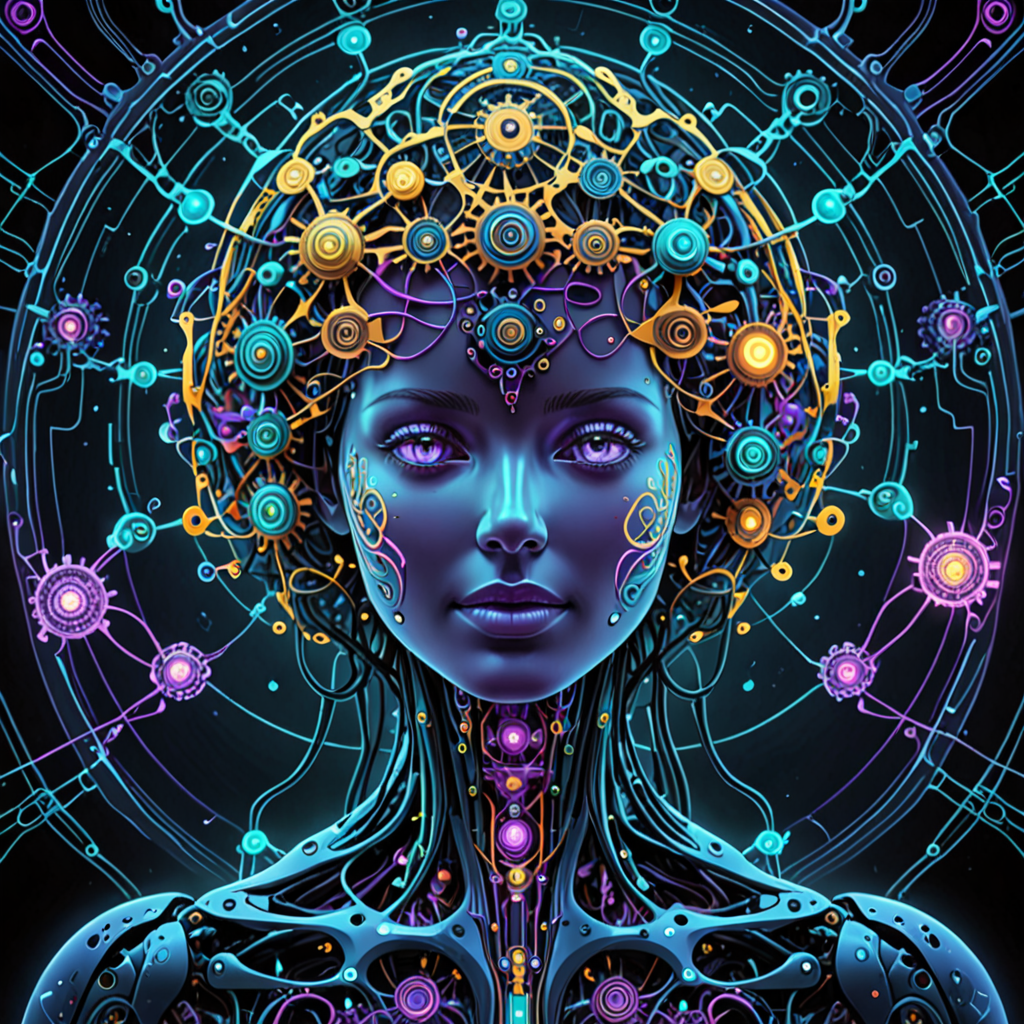
How to Make Your Own AI Chatbot Using Popular Platforms
Building your own AI chatbot has never been easier, thanks to a variety of platforms that cater to different needs and skill levels. Whether you are a beginner or an experienced developer, these platforms provide the tools necessary to create your own AI bot efficiently. In this section, we will explore some of the most popular platforms available for making AI chatbots and how they can help you achieve your goals.
Overview of Popular Platforms for Making AI Chatbots
When considering how to create your own AI chatbot, it’s essential to evaluate the platforms that best suit your requirements. Here are some of the leading options:
- Messenger Bot: This platform allows you to build your own AI chatbot with features like automated responses, workflow automation, and multilingual support. It’s perfect for businesses looking to enhance their digital communication.
- Dialogflow: Developed by Google, Dialogflow is a powerful tool for creating conversational interfaces. It offers robust natural language processing capabilities, making it easier to make your own AI chatbot that understands user intent.
- IBM Watson Assistant: Known for its advanced AI capabilities, IBM Watson allows you to create highly customizable chatbots that can be integrated into various platforms. Explore IBM’s AI chatbot solutions for enterprise-level applications.
- Microsoft Azure Bot Service: This service provides a comprehensive framework for building and deploying chatbots across multiple channels. Learn more about Azure’s chatbot capabilities to enhance your customer interactions.
Comparing Features: Which Platform is Right for You?
Choosing the right platform to make your own AI chatbot depends on several factors, including your technical expertise, budget, and specific needs. Here are some key features to consider:
- User-Friendliness: If you are new to chatbot development, platforms like Messenger Bot offer intuitive interfaces that simplify the process of creating AI chatbots.
- Integration Capabilities: Ensure that the platform you choose can integrate seamlessly with your existing systems, such as CRM tools or e-commerce platforms. Messenger Bot excels in this area, allowing for easy integration into websites.
- Customization Options: Look for platforms that allow you to tailor your chatbot’s responses and functionalities to meet your specific business needs. This is crucial for creating a personalized user experience.
- Analytics and Reporting: Choose a platform that provides insights into user interactions and performance metrics, helping you optimize your chatbot over time.
By evaluating these features, you can determine which platform is best suited for your project and how to build your own AI chatbot effectively.
What are the common challenges in creating AI chatbots?
Creating your own AI chatbot can be a rewarding endeavor, but it also comes with its share of challenges. Understanding these obstacles is crucial for successfully building and deploying an effective AI bot. Here, we will explore some common challenges and how to navigate them.
Identifying and Overcoming Obstacles in AI Chatbot Development
When you decide to build your own AI chatbot, you may encounter several hurdles:
- Understanding User Intent: Accurately interpreting user queries is essential for an AI chatbot’s success. Misunderstandings can lead to poor user experiences. To mitigate this, invest time in training your chatbot with diverse datasets that reflect real user interactions.
- Integration with Existing Systems: Seamlessly integrating your AI bot with existing platforms can be complex. Ensure that you choose tools that offer robust APIs and support for the systems you currently use.
- Maintaining Contextual Awareness: AI chatbots often struggle with maintaining context over multiple interactions. Implementing memory features can help your bot remember previous conversations, enhancing user satisfaction.
- Handling Diverse Queries: Users may ask questions in various ways. To create your own AI chatbot that can handle this diversity, utilize natural language processing (NLP) techniques to broaden its understanding.
Best Practices to Avoid Pitfalls When Building Your Own AI Bot
To successfully make your own AI chatbot, consider the following best practices:
- Start Simple: Begin with a basic version of your chatbot and gradually add features based on user feedback. This iterative approach allows for continuous improvement without overwhelming your development process.
- Test Extensively: Regular testing is vital to identify and fix issues early. Use both automated tests and real user interactions to ensure your chatbot performs well under various scenarios.
- Gather User Feedback: Actively seek feedback from users to understand their experiences and pain points. This information is invaluable for refining your chatbot’s capabilities.
- Stay Updated with Technology: The field of AI is rapidly evolving. Keep abreast of the latest advancements in AI and NLP to enhance your chatbot’s performance and capabilities.
By recognizing these challenges and implementing best practices, you can effectively build your own AI bot that meets user needs and drives engagement.
How to Test and Improve Your AI Chatbot?
Testing and improving your AI chatbot is crucial to ensure it meets user expectations and performs effectively. By implementing effective testing methods, you can identify areas for enhancement, ensuring that your chatbot delivers a seamless experience. Here’s how to approach this process.
Effective Testing Methods for Your AI Chatbot
To build your own AI chatbot that truly resonates with users, consider the following testing methods:
- User Testing: Involve real users in testing your chatbot. Gather feedback on its responses, usability, and overall experience. This direct input is invaluable for identifying pain points.
- A/B Testing: Create variations of your chatbot’s responses or workflows and test them with different user groups. Analyze which version performs better in terms of user engagement and satisfaction.
- Performance Metrics: Monitor key performance indicators (KPIs) such as response time, user retention, and conversion rates. Tools like Google Analytics can help track these metrics effectively.
- Scenario Testing: Simulate various user scenarios to see how your chatbot handles different inquiries. This helps ensure it can manage a wide range of interactions.
By employing these methods, you can effectively create your own AI chatbot that is responsive and user-friendly.
Continuous Improvement: Gathering Feedback and Iterating on Your AI Bot
Once your chatbot is live, the process of improvement should be ongoing. Here are some strategies to ensure continuous enhancement:
- Feedback Loops: Implement mechanisms for users to provide feedback directly within the chat interface. This can include rating responses or leaving comments.
- Regular Updates: Periodically review and update your chatbot’s knowledge base and responses based on user interactions and feedback. This keeps the content relevant and accurate.
- Analytics Review: Regularly analyze performance data to identify trends and areas needing improvement. Adjust your chatbot’s functionality based on these insights.
- Community Engagement: Engage with your user community to understand their needs better. This can help you prioritize features and improvements that matter most to them.
By focusing on these continuous improvement strategies, you can ensure that your chatbot remains effective and relevant, ultimately enhancing user satisfaction and engagement. For more insights on how to make your own AI chatbot, check out our Messenger bot tutorials.
